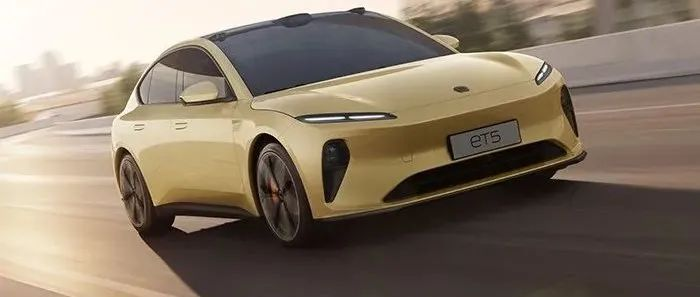On December 18th, 2021, 2021 NIO DAY was successfully held in Suzhou. Compared with last year’s 2020 NIO DAY, this year’s “explosive” news has been reduced, and the focus of the entire press conference can be said to be mostly on the new ET5. However, this is also what ordinary consumers are most looking forward to.

The new ET5 is positioned as a mid-size luxury coupe. The whole vehicle purchase plan is 328,000-386,000 yuan, and all battery rental plans are 258,000 yuan. Since the subsidy policy for 2022 has not yet been introduced, it is temporarily unknown whether purchasing a car with a battery rental plan (less than 300,000 yuan) will enjoy the subsidy.
First ET5 owner rights:
- 10 years unlimited mileage warranty (vehicles that choose BaaS service are not eligible for the 10-year power battery warranty policy, but NIO will still guarantee battery health);
- Lifetime free battery swap (maximum of 6 times per month);
- Lifetime free vehicle networking (maximum of 8 GB of free traffic per month in mainland China);
- Free exclusive charging pile (the cable length required to install the home charging pile is within 30 meters, otherwise the material and installation costs will be waived);
- Lifetime free roadside assistance (excluding Hong Kong Special Administrative Region, Macao Special Administrative Region, and Taiwan area).
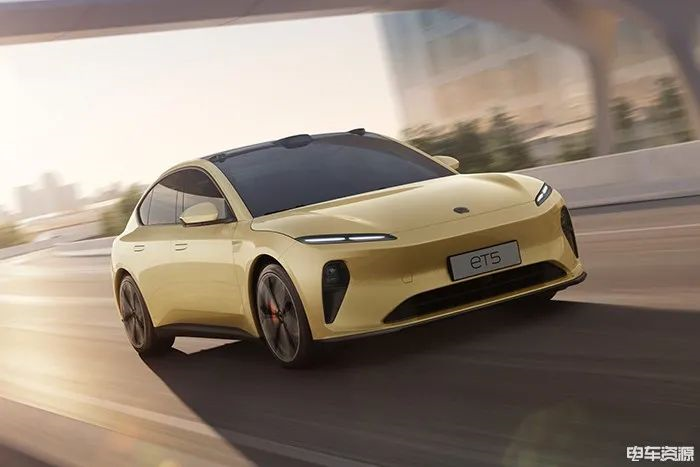
The new ET5 adopts a purer X-bar design language, with a very simple and dynamic front face, and continues to use a split-type lamp group. It is equipped with Double-Dash daytime running lights, which is similar to the overall design of the ET7.

The new car is available in 9 body colors, all of which are inspired by different sky colors from around the world at different times. The first four colors can be selected for free, while other colors require an optional fee of 10,000 yuan. “Mirror Sky Pink” and “Cloud Beginning Yellow” are exclusive colors for the ET5 and belong to a livelier warm color series.
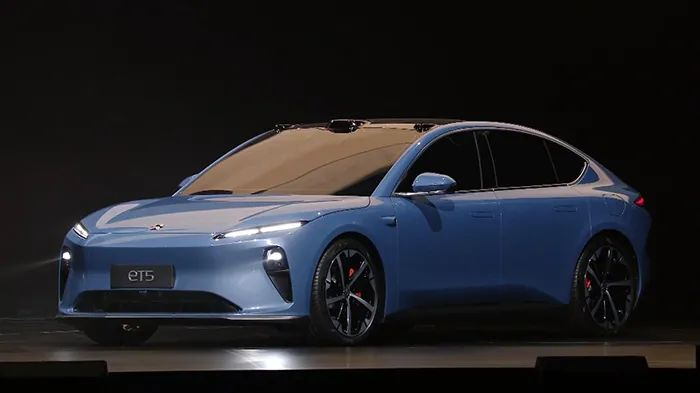
The body size of the ET5 is 4790/1960/1499 mm (length/width/height), and the wheelbase is 2888 mm, which is a relatively standard mid-size car size. The overall positioning and size are slightly smaller than the soon-to-be-delivered ET7.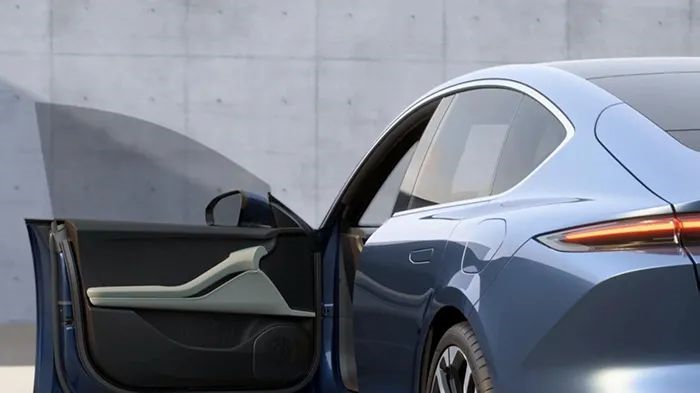
The standard UWB digital key and frameless electric suction doors are identical to those on the ET7. When you approach the car, the door handle will automatically extend. Just gently grasp the handle, and the door will automatically pop open; when you sit down, simply pull it to close; when you get out of the car, just press the door button to automatically pop open.

There are also four styles of rims to choose from, with 19-inch rims equipped with Michelin E-PRIMACY low rolling resistance tires in size 245/45 R19, while 20-inch rims are equipped with the more sporty P ZERO series tires from Pirelli in size 245/40 R20.
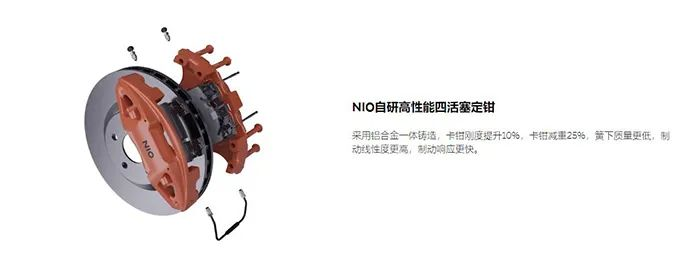
Equipped with front four and rear two brake calipers, customers who pay a deposit of 2,000 yuan before the official launch can upgrade for free to the “Moon” theme (all bright chrome on the car is replaced with matte color, worth RMB 4,500) as well as air orange caliper painting (worth RMB 3,500).

The tail of the car adopts a large spoiler design, and with the slightly raised edge of the trunk lid and the diffuser at the bottom of the car, the overall sportiness is quite strong.

It has a continuous LED tail light, but the internal design is different from that of the ET7. The official calls it the “illumiblade” light, with the middle part of the light strip being thinner and gradually widening as it extends to the sides.
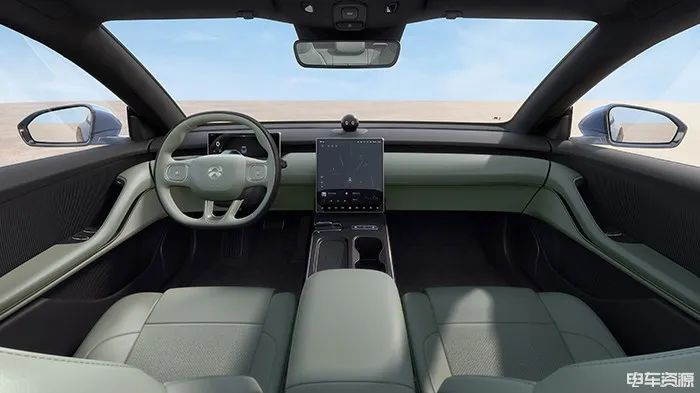
The layout and design of the interior retain a similar style to that of the ET7, but the steering wheel has changed from the double-spoke style to a more sporty triple-spoke design. There are also nine colors and three material combinations to choose from, including the seat, door panel, dashboard, steering wheel and seat belt. In addition, the interior uses a large amount of recyclable Clean+ environmentally friendly materials, reducing carbon emissions by more than 30% compared to conventional materials in the production process.
Due to the different prices of colors and materials, and the large number of combinations, not all are displayed in this article due to space limitations. Interested friends can check on the official website or official app.
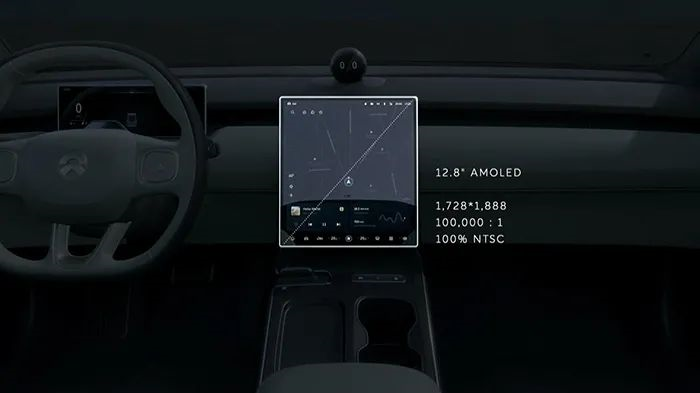
ET5 is equipped with a floating 10.2-inch digital instrument panel, and the central control screen is still vertically arranged, using a 12.8-inch AMOLED material with a resolution of 1728×1888. The car’s chipset is also the same high-performance Qualcomm Snapdragon 8155 as the ET7. As for the so-called 100% NTSC wide color gamut, it is not clear how much sRGB color gamut it is equivalent to on this screen, which is not very important for the car’s display screen.
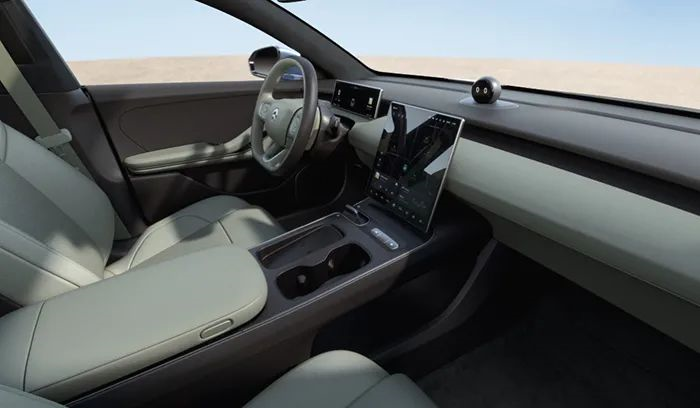
ET5 does not come with a heads-up display (HUD) (nor is it available as an option), but it is equipped with a hidden air conditioning vent and the world’s first 7.1.4 vehicle-mounted immersive sound system composed of 23 speakers, with a total power of up to 1 kW. There is also a newly used digital light screen ambient light, with up to 256×256 color combinations to choose from.
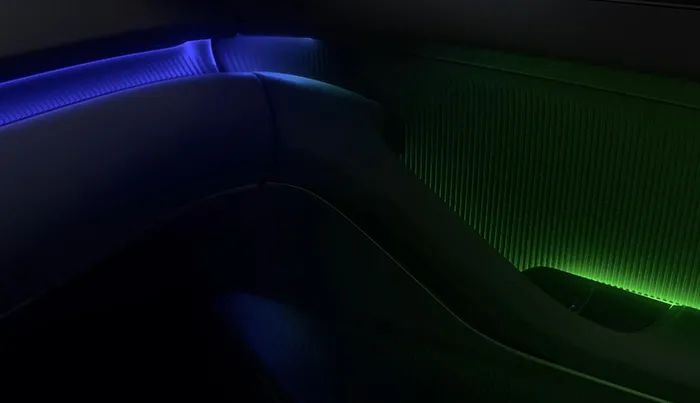

In addition, it can be connected to high-performance AR and VR devices jointly developed by NIO and its partners to achieve an in-vehicle AR/VR panoramic immersive experience.
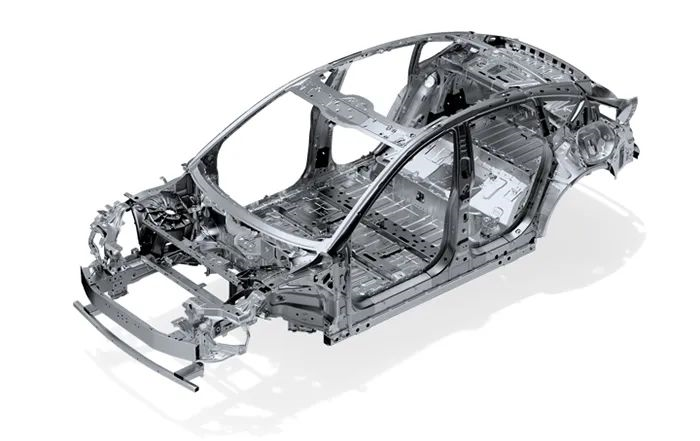
ET5 adopts a high-strength steel-aluminum mixed body with a vehicle torsional stiffness of 34,000 N・m/deg. The height of the vehicle center of gravity is only 482.6 mm, and with a wheelbase of 1,685 mm, the anti-rollover coefficient is 1.7, exceeding the US NHTSA five-star standard.
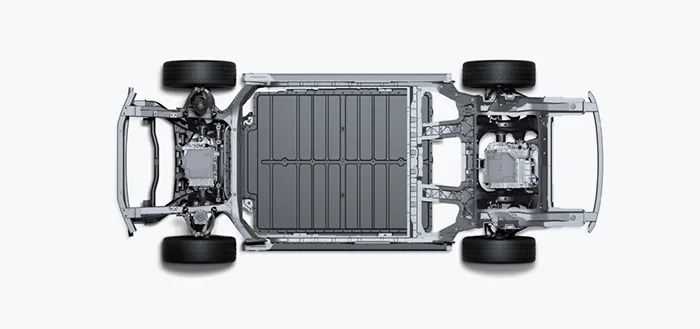 The powertrain is equipped with a self-developed second-generation silicon carbide electric drive system, featuring dual motors at the front and rear with a power output of 150 kW and 210 kW, respectively. The peak torque reaches 700 N·m and the acceleration performance is 4.3 seconds for the 0-100 km/h sprint. The wind resistance coefficient is 0.24.
The powertrain is equipped with a self-developed second-generation silicon carbide electric drive system, featuring dual motors at the front and rear with a power output of 150 kW and 210 kW, respectively. The peak torque reaches 700 N·m and the acceleration performance is 4.3 seconds for the 0-100 km/h sprint. The wind resistance coefficient is 0.24.
It is available with three battery packs:
- 75 kWh battery with a CLTC range of 500-550 km;
- 100 kWh battery with a CLTC range of 640-700 km;
- 150 kWh battery with a CLTC range of over 1000 km.
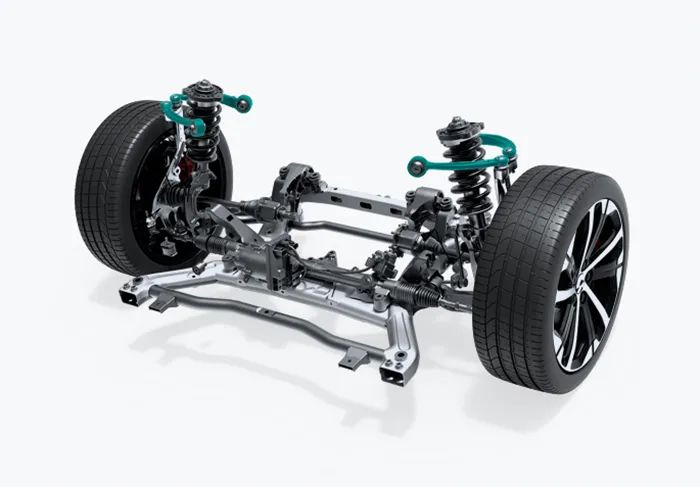
The ET5 also features a front and rear multi-link independent suspension system. The upper control arm of the front suspension uses a double-ball joint to form a disconnected A-arm structure, which is similar to the modified double-wishbone suspension system. In addition, the steering gear is positioned in front of the front axle, which is uncommon in conventional passenger cars. The anti-ackermann steering angle, commonly seen in F1 cars, can provide greater lateral inclination to the outer wheel, generating larger lateral forces and increasing the vehicle limit.

NIO has also equipped the ET5 with a brand-new NAD NIO Autonomous Driving System, which includes the NIO Super Sensing System AQUILA and the NIO Super Computing Platform ADAM. NIO independently develops the perception algorithm, map localization, control strategy, and underlying system. The system will be activated through a monthly subscription service, similar to QQ VIP, at a price of RMB 680 per month.
The AQUILA Super Sensing System has 33 high-performance perception hardware related to autonomous driving, including:
- 11 8-megapixel HD cameras
- 1 500m ultra-long-range high-precision LiDAR
- 5 millimeter-wave radars
- 12 ultrasonic sensors
- 2 high-precision positioning units
- 1 vehicle-to-infrastructure (V2I) perception
- 1 driver monitoring
The detection range of the 8-megapixel HD camera can reach three times that of current Tesla models (1.2 million pixels). All cameras combined can generate 8 GB of image data in one second.
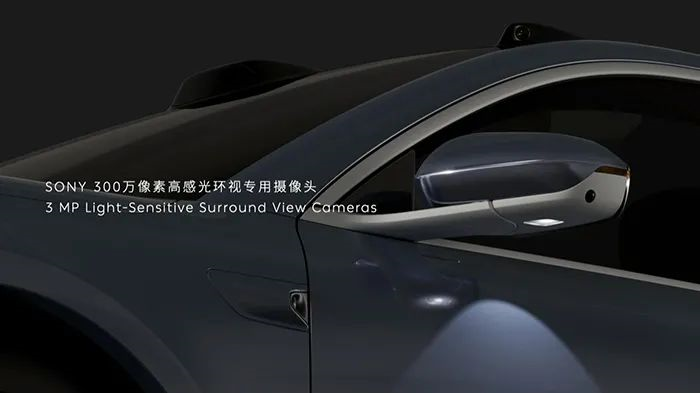
The 360° surround camera system has also been upgraded to a 3 million-pixel high-sensitivity camera provided by Sony, which will also be applied to the upcoming ET7.
The NIO supercomputer platform ADAM includes four of NVIDIA’s latest Orin chips (two main control chips, one redundant backup chip, and one for collective intelligence and personalized training), using 7nm production process, the total computing power reaches 1016 TOPS, seven times that of Tesla’s current HW3.0 hardware!
Summary
There is no doubt that with the pricing of the ET5, NIO’s entry-level model, being further reduced, it will compete with the likes of the XPeng P7, BYD Han, Jidu Alpha S and other same-level models. Although the starting price of the ET5 has exceeded RMB 300,000, its richer configurations and more user-friendly services are advantages that other brands cannot match.
Does the more “down-to-earth” ET5 have the potential to become NIO’s sales mainstay? Let’s look forward to the final delivery in September next year.
This article is a translation by ChatGPT of a Chinese report from 42HOW. If you have any questions about it, please email bd@42how.com.
